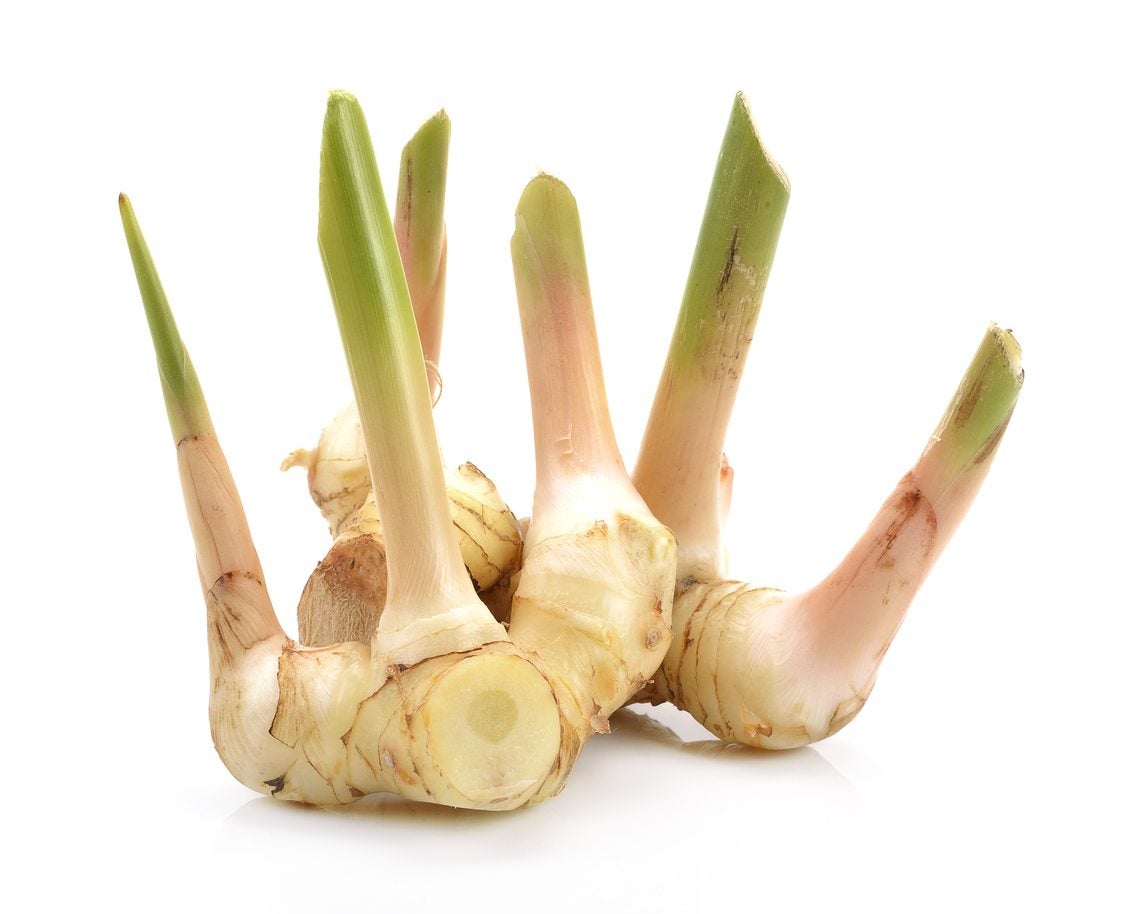Galangal Plant Info – Learn About Galangal Plant Care And Usage


What is galangal? Pronounced guh-LANG-guh, galangal (Alpinia galangal) is often mistaken for ginger, although galangal roots are a little bigger and a lot firmer than ginger roots. Native to tropical Asia, galangal is a huge perennial plant grown primarily for its ornamental qualities and underground rhizomes, which are used to flavor a variety of ethnic dishes. What to learn how to grow galangal? Read on.
Galangal Plant Information
Galangal is a tropical plant that grows in USDA plant hardiness zones 9 and above. The plant requires partial shade and moist, fertile, well-drained soil.
Galangal rhizomes, or “hands,” widely available at ethnic supermarkets are ideal for planting. Many gardeners prefer to plant whole rhizomes, but if the rhizomes are too large, cut them into chunks with at least two “eyes.” Keep in mind that larger pieces produce bigger rhizomes at harvest time.
Plant galangal after all danger of frost has passed in early spring, but be careful about planting if the soil is too soggy. Although galangal roots need moist soil, they may rot in cool, soggy conditions. Allow 2 to 5 inches (5-13 cm.) between rhizomes.
Add a few inches of compost or well-rotted manure if soil is poor. An application of a timed-release fertilizer gets growth off to a good start.
The rhizomes will be ready to harvest in early winter, typically ten to 12 months after planting.
Galangal Plant Care
Galangal is a very low maintenance plant. Just water as needed to keep the soil evenly moist but not saturated. The plant also benefits from monthly fertilization, using a general purpose, water-soluble fertilizer.
Gardening tips, videos, info and more delivered right to your inbox!
Sign up for the Gardening Know How newsletter today and receive a free copy of our e-book "How to Grow Delicious Tomatoes".
Leave a few galangal roots in the ground in autumn if you want to continue growing galangal the following spring. Mulch the plant well to protect the roots during the winter months.

A Credentialed Garden Writer, Mary H. Dyer was with Gardening Know How in the very beginning, publishing articles as early as 2007.
-
 Looking For Plants To Give You The Soft And Fuzzies? Try These 5 Fuzzy Leaf Plant Options
Looking For Plants To Give You The Soft And Fuzzies? Try These 5 Fuzzy Leaf Plant OptionsLovers of texture, drama, silver foliage and tactile plants will adore these special sensory garden additions. These fuzzy leaf plant options will leave you all aglow
By Susan Albert
-
 Get Ready For A Summer Of Hummers! Grow These Full Sun Hummingbird Plants and Flowers
Get Ready For A Summer Of Hummers! Grow These Full Sun Hummingbird Plants and FlowersIf you’re lucky enough to enjoy a sunny backyard, make sure you are maxing out on your pollinator opportunities and grow these full sun hummingbird plants and flowers
By Tonya Barnett